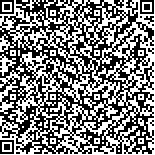李丛琴,王强,罗路,等.运动训练对卒中后抑郁大鼠PTEN诱导的炎症通路及海马神经元凋亡的影响[J].中华物理医学与康复杂志,2020,42(7):577-582
扫码阅读全文

|
| 运动训练对卒中后抑郁大鼠PTEN诱导的炎症通路及海马神经元凋亡的影响 |
|
| |
| DOI:10.3760/cma.j.issn.0254-1424.2020.07.001 |
| 中文关键词: 运动 脑卒中 抑郁 磷酸酶与张力蛋白同源物 炎症 |
| 英文关键词: Exercise Stroke Depression PTEN phosphohydrolase inflammation |
| 基金项目:山东省自然科学基金(ZR2014JL057) |
|
| 摘要点击次数: 5899 |
| 全文下载次数: 7042 |
| 中文摘要: |
| 目的 比较中等强度持续训练(MICT)或高强度间歇训练(HIIT)对卒中后抑郁(PSD)模型大鼠磷酸酶与张力蛋白同源物(PTEN)诱导的炎症通路及海马神经元凋亡的影响,探讨运动训练治疗PSD的可能机制。 方法 将雄性Wistar大鼠随机分为假手术(SHAM)组、PSD组、中等强度持续训练(MICT)组和和高强度间歇训练(HIIT)组。除SHAM组以外,通过阻塞大脑中动脉闭塞(MCAO)诱导脑缺血90 min后再灌注(reperfusion),然后给予慢性不可预测的温和刺激(CUMS)以诱导大鼠抑郁样行为。造模成功后24 h,MICT组和HIIT组大鼠开始行28 d对应强度的跑步训练,期间以每周测得的乳酸阈值和最大速度为标准调整跑台速度。SHAM组仅分离颈总动脉、颈内动脉、颈外动脉,不做插线处理,也不给予CUMS。分别于造模成功后24 h及最后1次运动训练后24 h,采用糖水消耗试验(SPT)、强迫游泳试验(FST)检测大鼠的抑郁情况;免疫印迹技术检测肿瘤抑制因子PTEN以及核转录因子κB(NF-κB)和炎症小体Nod样受体蛋白3(NLRP3)的表达;免疫组化法检测凋亡关键蛋白半胱氨酸天冬氨酸蛋白酶3(Caspase-3)的表达。 结果 与SHAM组相比,PSD组大鼠FST中的不动时间明显增加(P<0.05),SPT中的糖水消耗量明显减少(P<0.05);与PSD组相比,MICT组和HIIT组大鼠的不动时间明显减少(P<0.05),糖水消耗明显增多(P<0.05),表明运动训练后大鼠的抑郁程度减轻。免疫印迹技术检测显示,与PSD组相比,MICT组和HIIT组大鼠脑缺血侧海马区的PTEN、NF-κB及NLRP3表达均明显减少(P<0.05),且HIIT组PTEN、NF-κB及NLRP3表达均明显低于MICT组(P<0.05)。免疫组化检测显示,与PSD组相比,MICT组和HIIT组海马齿状回(DG)的Caspase-3表达明显减少(P<0.05),且HIIT组的Caspase-3表达明显低于MICT组。 结论 运动训练通过抑制PTEN、NF-κB、NLRP3通路的激活,减少海马DG区凋亡蛋白的表达,减轻卒中后抑郁大鼠抑郁程度,促进神经功能恢复;且HIIT的抗抑郁作用较MICT更为明显。 |
| 英文摘要: |
| Objective To compare using a rat model of post-stroke depression (PSD) the effect of 28 days of high-intensity interval training (HIIT) with that of medium-intensity continuous training (MICT) on inflammation and neuron apoptosis induced by phosphatase and the deletion of a tensin homolog on chromosome ten (PTEN). Methods Male Wistar rats were randomly divided into a SHAM, a PSD, an MICT and an HIIT group. Except in the SHAM group, blood flow in the middle cerebral artery was blocked for 90 minutes followed by reperfusion. Repeated but unpredictable mild stimulation was then applied to induce depression. The rats in the HIIT and MICT groups started 28 days of training 24 hours after the successful modeling. The running platform speed was adjusted according to the lactic acid threshold and the maximum speed was measured weekly. In the SHAM group the common carotid artery, internal carotid artery and external carotid artery were only separated without occlusion and there was no depressive stimulation. Any improvements in depression were detected using the sucrose preference test and the forced swimming test. The expression of PTEN, nuclear factor kappa B (NF-κB) and nod-like receptor protein 3 (NLRP3) were detected using western blotting. The expression of cysteine-containing, aspartate-specific proteases (caspase-3) was detected immunohistochemically. Results Compared with the SHAM group, the PSD group′s average immobility time in the swimming test was significantly longer and its average sucrose consumption was significantly less. Compared with the PSD group, the rats in the MICT and HIIT groups showed, on average, significantly more sucrose consumption and shorter immobility time, indicating that their depression was ameliorated. The expression of PTEN, NF-κB and NLRP3 in the MICT and HIIT groups was, on average decreased significantly compared with the PSD group. The HIIT group′s averages were at the same time significantly lower than those of the MICT group. Average caspase-3 levels in the dentate gyrus of the MICT and HIIT group rats were significantly lower than in the PSD group, with the HIIT group′s average significantly lower than that of the MICT group. Conclusions Both high- and medium-intensity interval training show neuroprotective effects. They inhibit activation of the PTEN/NF-κB/NLRP3 pathway, reducing the expression of apoptotic proteins in the hippocampus. Higher intensity training has a more obvious antidepressant effect. |
|
查看全文
查看/发表评论 下载PDF阅读器 |
| 关闭 |
|
|
|